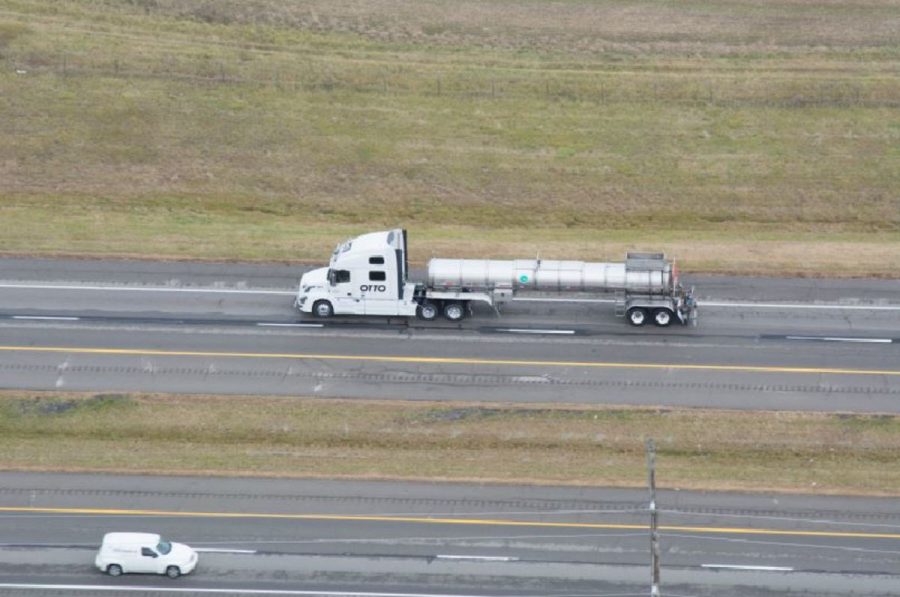Trucks drive away from jobs
ftp://ftp.dot.state.oh.us/pub/Comm/SmartMobilityCorridor/Photos/@20161129-OTTO%20Truck-107.jpg
Self driving trucks have already begun testing on the corridor, even with normal traffic on the road at the same time. A major concern with self driving vehicles is safety, but extensive testing is being conducted to assure the daily injury and death tolls do not rise. Although slightly concerning now, self driving vehicles could improve safety in the long run.
As a leader in smart mobility including autonomously operating vehicles, Ohio needs to consistently produce and test new, revolutionary ideas that could change the world. And with Governor John Kasich’s approval of the Smart Mobility Corridor along U.S. Route 33, that is just what they have done.
According to the Ohio Department of Transportation (ODOT), the Smart Mobility Corridor is a $15 million project which will stretch across 35 miles of land in Central Ohio.
The corridor is going to be used as a testing ground for all self-driving vehicles, but its main function will be to test self driving trucks.
Shortly after Kasich announced the approval and launch of this vehicle research project, a self driving truck operated by the company Otto drove from Dublin, OH to East Liberty, OH.
Kasich states that this project, “provides [automotive researchers] with the perfect location and state-of-the-art infrastructure for safely testing autonomous and connected vehicle technologies.”
The Smart Mobility Corridor will be equipped with fiber optic cables along with embedded and wireless sensors on the road, allowing for instant updates to researchers and traffic monitors. Considering that the road is used by about 50,000 vehicles each day, the researchers will use and need as much data as they can get.
ODOT Director Jerry Wray claims that once self driving trucks are out on the road regularly, Ohioans will benefit from, “a safer, better driving experience and… reduced transportation costs, faster access to markets and increased efficiency.”
Even if Ohioans benefit from safer road conditions and quicker, more efficient processes when shipping certain items, the rise of interest in self driving cars and trucks has many people worried about how many jobs will be lost to technology.
According to the University of Minnesota, “truck, delivery, and tractor driving” is the most popular job in 29 out of the 50 states. There are an estimated 3.5 million professional truck drivers in the U.S. and over 8.7 million people with jobs in that industry.
As of right now, there is no telling how great of an impact this transition to technology will have on families across America or around the world.
“I don’t know how severe the impact of this will be, but I feel bad for anyone who is a truck driver because they do their jobs fine now; and if they get replaced by machines, what are they going to do? It is hard enough to get a job as it is, but with a background as a truck driver what are they going to do?,” said Ryan Wick, 12.
Your donation will support the student journalists of Sycamore High School. Your contribution will allow us to purchase equipment and cover our annual website hosting costs.



![Mock Trial members from Gold and Green team last year pose for a picture in front of the OCLRE building in Columbus. "We all put in so much work [last] year. I know [this] year we’ll come back improved and ready to win!” said Ogunbodede.](https://shsleaf.org/wp-content/uploads/2025/10/IMG_4121-600x411.jpg)



